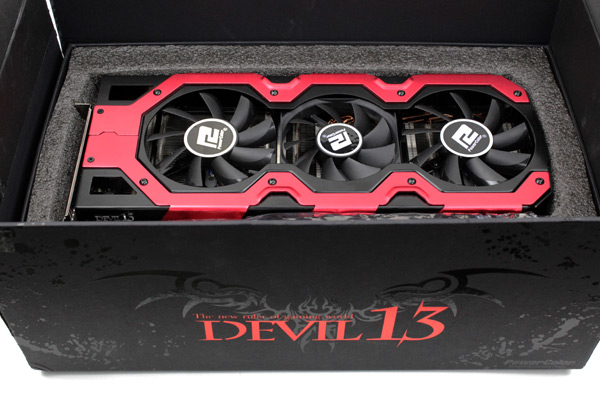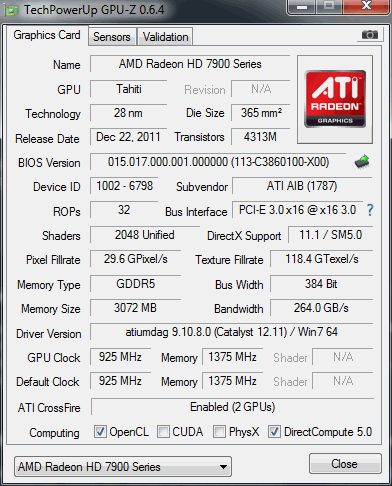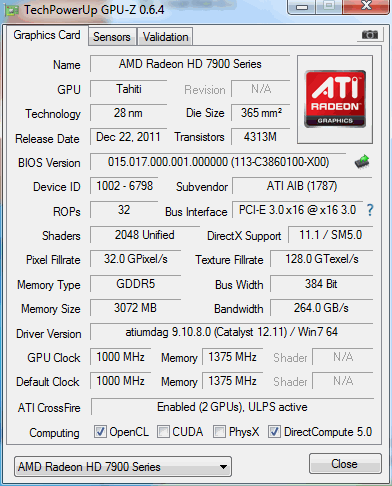Index


Review: The Beast
Strangely enough, although we expected this from AMD first, it’s actually Power Color who first strapped a PCB with two Tahiti XT GPUs. In fact, the company offers two versions of the card, one of which is our today’s test card - the Devil 13, whereas the other is clocked lower and simply named the HD 7990.
Club 3D and VTX 3D followed up with their own HD 7990 cards, but it’s actually the same card with slightly lower clocks. It appears that some other AMD partners will jump aboard the HD 7990 train, which is always a good thing. We know HIS is working on the card, but they call it the HD 7970 X2.
Power Color’s HD 7990, the slower one, is clocked at 900MHz (with turbo BIOS at 925MHz), while the Devil 13’s GPU runs at 925MHz (turbo BIOS at 1000MHz). Note that the company didn’t use AMD’s recently launched Tahiti XT 1GHz Edition chips. Apart from higher clocks, the new Tahiti XT chips come with PowerTune and Boost, which is similar to Nvidia’s auto-overclocking once there’s thermal and power headroom. Luckily, the Devil 13’s turbo BIOS means 1000MHz, so users won’t really notice any more meaningful difference.
The Devil 13 HD 7990 card comes in special packaging with a few gifts thrown in, which we’ll discuss in more detail next.

GPUZ confirmed the Devil 13 runs at 925MHz and that loading turbo BIOS ups it to 1000MHz. Unfortunately, loading the BIOS can’t be done on the fly and although the Turbo can be switched whenever you wish, the new BIOS will load only after you restart your computer. The turbo BIOS switch is placed on the I/O panel for accessibility reasons.




